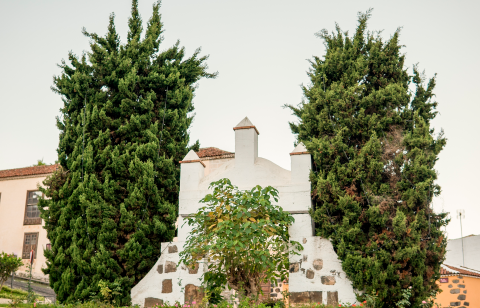
This facade was the entrance to the Franchy family estate. They gained vast wealth from the division of lands due to their financial contribution to the conquest and the noble title of Marquis of El Sauzal and La Candia. The facade used to be located lower down on the other side of the street. "Mayorazgo" was the term used for the inheritance received by the firstborn. In the olden days, it was customary for the eldest son to receive the entire family inheritance. This way, they made sure that the family's assets increased instead of decreasing when a marriage took place. Sons without a right to an inheritance went into the army or priesthood.
La Orotava's Mayorazgo estate was one of the largest in the Canary Islands for centuries. It was originally planted with sugar cane, followed by a vineyard, and after that it was a banana plantation. These three crops, together with cochineal, historically sustained the economy of the islands. In 1905, a fire completely destroyed the old mansion and its gardens.
The original house was a meeting point of great European science figures over the centuries. People who spent time here include the naturalists Sabino Berthelot, Ledrú and Humboldt, and the astronomer Piazzi Smyth. The greatest attraction of these gardens for scientists and travellers was its legendary dragon-tree, the symbol of La Orotava and central element of its shield. It remained standing until the 19th century, when it was blown down by successive storms. Humboldt calculated that it was almost 20 metres high and had a perimeter of about 15 metres. To give you an idea of its size, at the end of the 18th century, a platform was built under its canopy for a 14-person banquet in honour of an English lord. At the time, it was estimated to be 2,000 years old and was known as a sacred place for the natives. The conquistadors used it as a chapel and a place to perform public executions.
The dragon-tree was not the only important tree in the Franchy gardens. There was also the Conquest Palm, a palm tree about 30 metres high, which was blown down by a storm in 1918. It was planted by the conquistadors and, due to its size and height, it became a geographical reference for sailors.
Although these magnificent specimens can no longer be enjoyed today, you’ll still find large palm and dragon trees along the route.
Go up the cobbled hill in front of you, called Calle Cologan, and stop on the pavement in front of number 5, where the Cologan house is located.





